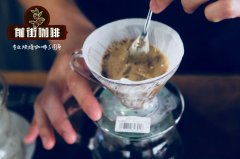Introduction to the characteristics of washing Rose Summer in Casablanca, Colombia, is Tansander Coffee the best in Colombia?

Country of origin: Colombia
Producing area: Tande
Farm: Casablanca Manor
Variety: Rose summer
Treatment: washing
Flavor: Jasmine, citrus, rose fruit, tea feeling
Production area introduction
Santander is unique in Colombia's coffee-growing areas, with mountains, rivers, valleys and valleys. Santander province, located in the east of Antioquia and in the north of Boyaca, Cundinamarca and Bogota in central Colombia, was founded in 1857 and now has a variety of agricultural industries.
The Andes of Santander is home to the first coffee farms established in Colombia, and the agricultural history of the department is closely related to the history of coffee. Fresh water and rich soil continue to make the area suitable for today's coffee cultivation, with most farms planted with shaded trees and forests.
In 2006, Liliana Caballero Rojas (Liliana Caballero Rojas) and her family bought the estate in Vereda Vericute, Vereda Vericute, Florida. Liliana is a native of Santander whose parents work in agriculture and grow up to grow coffee, providing a better life for their families and people who work and harvest seasonally at Hacienda Casablanca all year round.
Liliana's vision as an administrative and financial professional is to add value to the coffee sector through plans to renovate old parcels, grow new varieties such as Gesha and improve processing and drying techniques. Recently, her motivation is to win the 2016 National Yara Championship Program. To increase income during the price crisis, Liliana sells roasted coffee to the local market in her own packaging.
The history of Hasanda Casablanca can be traced back to 1860, three years after the establishment of Santander's department. It was originally called Villa Josefa, then Hacienda La Leona, and finally Hacienda Casablanca.
Since its inception, the manor initially covers an area of 150 hectares, which is traditionally grown for coffee. The larger size gives it the identifier "hacienda", which means manor, which is used in Colombia to indicate sufficient property. After years of subdivision of the original estate, the 20 hectares of land left in Casablanca is still named after the farm history, including the "manor", including the main house and its original buildings from the mid-19th century.

Washing process
After harvesting ripe cherries, take them to the mill, where they are selected to remove any twigs, leaves or immature cherries. Cherries go through the floating process, classified by density, and then enter the first step of fermentation. They are then stripped and some mucus is left for the second fermentation process. The fermentation time will depend on the outline of the cup we are looking for. The coffee is then brought to the canal for cleaning and the beans are further selected. After that, the coffee is brought to the drying bed, where the coffee will be dried at a controlled temperature of no more than 40 degrees Celsius.
Important Notice :
前街咖啡 FrontStreet Coffee has moved to new addredd:
FrontStreet Coffee Address: 315,Donghua East Road,GuangZhou
Tel:020 38364473
- Prev

Sonora, an ancient manor in Costa Rica, how does suntan Kaduai coffee taste?
Sonora Manor has produced coffee in Carillo, Alajuela, Costa Rica, for five generations. Today, Diego Guardia, the producer, runs the farm and combines the wisdom of his family's coffee producers with a forward-looking way of thinking. In addition to running its own farm, Diego is also the main specialty of CECA (Costa Rican coffee).
- Next

What are the characteristics of Brazilian coffee? Does Brazil produce more commercial beans? Description of Kaduai Flavor in Sun Red
Country of origin: Brazil: Matas de Minas Farm: CrregoSoPedro Variety: red Kaduai treatment: sun Flavor: chocolate, Citrus Matas de Minas Coffee area is located in the southeast of Minas Gerais state, just above the border of Espirito Santo, AltoCapara is its best-known municipality. The terrain of Matas de Minas is unique.
Related
- Detailed explanation of Jadeite planting Land in Panamanian Jadeite Manor introduction to the grading system of Jadeite competitive bidding, Red bid, Green bid and Rose Summer
- Story of Coffee planting in Brenka region of Costa Rica Stonehenge Manor anaerobic heavy honey treatment of flavor mouth
- What's on the barrel of Blue Mountain Coffee beans?
- Can American coffee also pull flowers? How to use hot American style to pull out a good-looking pattern?
- Can you make a cold extract with coffee beans? What is the right proportion for cold-extracted coffee formula?
- Indonesian PWN Gold Mandrine Coffee Origin Features Flavor How to Chong? Mandolin coffee is American.
- A brief introduction to the flavor characteristics of Brazilian yellow bourbon coffee beans
- What is the effect of different water quality on the flavor of cold-extracted coffee? What kind of water is best for brewing coffee?
- Why do you think of Rose Summer whenever you mention Panamanian coffee?
- Introduction to the characteristics of authentic blue mountain coffee bean producing areas? What is the CIB Coffee Authority in Jamaica?

